For Art Basel Paris 2024, Kiang Malingue presents more than twenty recent works by four female Asian artists from different generations: Brook Hsu, Ellen Pau, Carrie Yamaoka and Hiroka Yamashita.
Brook Hsu’s rare large-scale triptych Three Studies of a Woman Getting Into a Car (2024) was inspired by the experience of exhibiting site-specific paintings in Sant’Andrea de Scaphis, Rome. She became intrigued by the form of triptych, “where it took architecture into itself.” Having revisited the art of Bacon—specifically Figures Getting Out of a Car (c.1945–1946) and Landscape with Car (c. 1945-1946)—Hsu stayed with a scene from David Cronenberg’s 1995 film Crash, when Gabrielle asks the car dealer if she could easily get into the black convertible with her leg braces. Although her intention was an initial obsession with architecture and the work of Bacon, she ended up with a work that very directly references the aesthetics of Andy Warhol, as shown in Green Car Crash (1963) from his “Death and Disasters” series. “…As for the Warhol reference, there is slowness to my works in comparison to the reproducibility of the Warhols. Not that I think reproducibility in his works devalues them in any way. But in terms of my own work, the value of taking time and slowing things down seems to be of growing importance.” The pair of La Victime (2024) also on view testifies to Hsu’s continued fascination in Balthus’ art. Hsu’s transgressive version turn Balthus’ ill-fated woman into a skeleton, exempting her from a murderous plot.
A series of wall pieces by Carrie Yamaoka demonstrate the artist’s ongoing exploration of reflectiveness and tactility, by making artworks that are at once sculptural, painterly and photographic. Since 1994, Yamaoka has been using reflective polyester film, vinyl and urethane resin to produce highly reflective pieces, setting up conditions for numerous chances and incidents to transpire on and beneath the surface. She lifted paint off in 40 by 30 (lift-off /tint) (2024) to create a surface that is almost organic; allowed urethane resin to crawl and shrink beyond control in 24 by 20 (grey crawl) (2024) and 14 by 11 (flake.crawl) (2024); rubbed 10 by 8 (wall #4) (2024) against a wall in her studio, in order to give rise to unexpected developments. She has also returned to applying vibrant, iridescent pigments in recent series such as “14.125 by 11.625”, presenting surfaces that actively involve the presence of the viewer.
Based in a secluded community of Okayama, Japan, Hiroka Yamashita’s recent paintings are particularly rapt, layering dreams, hallucinations and trances onto scenes of the everyday life. Her practice communicates with the history of Japanese art and, in particular, Tōhaku Hasegawa’s (1539-1610) canonical scroll paintings. One sees in the largely crimson A Summer Night (2024) a human figure feeling the summer night breeze. The weather is “still sultry, but a slight relief.” The smeared surface of the painting is occupied by colours and elements that appear ominous when viewed individually; when mixed together, however, they manage to disarm each other, almost becoming a precariously balanced unity. The subject of gravity, revealed by the suppressing red in this picture, is also addressed in The Floor (2024) and Light Pillars (2024). The former is an image of a “sacred place,” where meditations and rites take place. The structure of this secluded place is also organic, resembling tender body parts in colour and shape. The Light Pillars is one of the largest canvases by Yamashita in recent years, recollecting a spectacular event that took place on May 11th, 2024—appearance of pillars of light in the night sky in Tottori, Japan. Emphasising the surreal nature of the event, Yamashita added two floating figures that are meant to represent reflections on a window, and the presence of a fragmentary, romantic narrative.
Also on view are two video works by Ellen Pau, who is recognised for her contributions to the development of Hong Kong video art in the last four decades. She Moves (1988) is a historic single channel piece shot on Video8 format, tracing the quiet movement of water droplets as an expression of emotion. Reflecting on the early work’s examination of the rhythmic texture of video as a medium, Pau’s first holographic video She Dreams (2024) explores the intersection of nature and technology by producing a kaleidoscope of fractal patterns inspired by the sterile Bauhinia x blakeana (Hong Kong Orchid Tree) on holographic screen. It is the floral emblem of the artist’s hometown city, Hong Kong. She Dreams delves into the imaginative possibilities of AI-generated hybrid flowers, each a unique vision of potential futures. The soundtrack of the work came from the DNA sequence of the the Bauhinia x blakeana. For Pau, the sterile nature of the flower symbolizes unfulfilled dreams and lost potential, pertaining to the delicate balance between creation and decay. She Dreams is considered a meditation on the ephemeral nature of dreams and the possibilities they hold.
Art Basel Paris 2024 | Booth J16 Brook Hsu, Ellen Pau, Carrie Yamaoka, Hiroka Yamashita
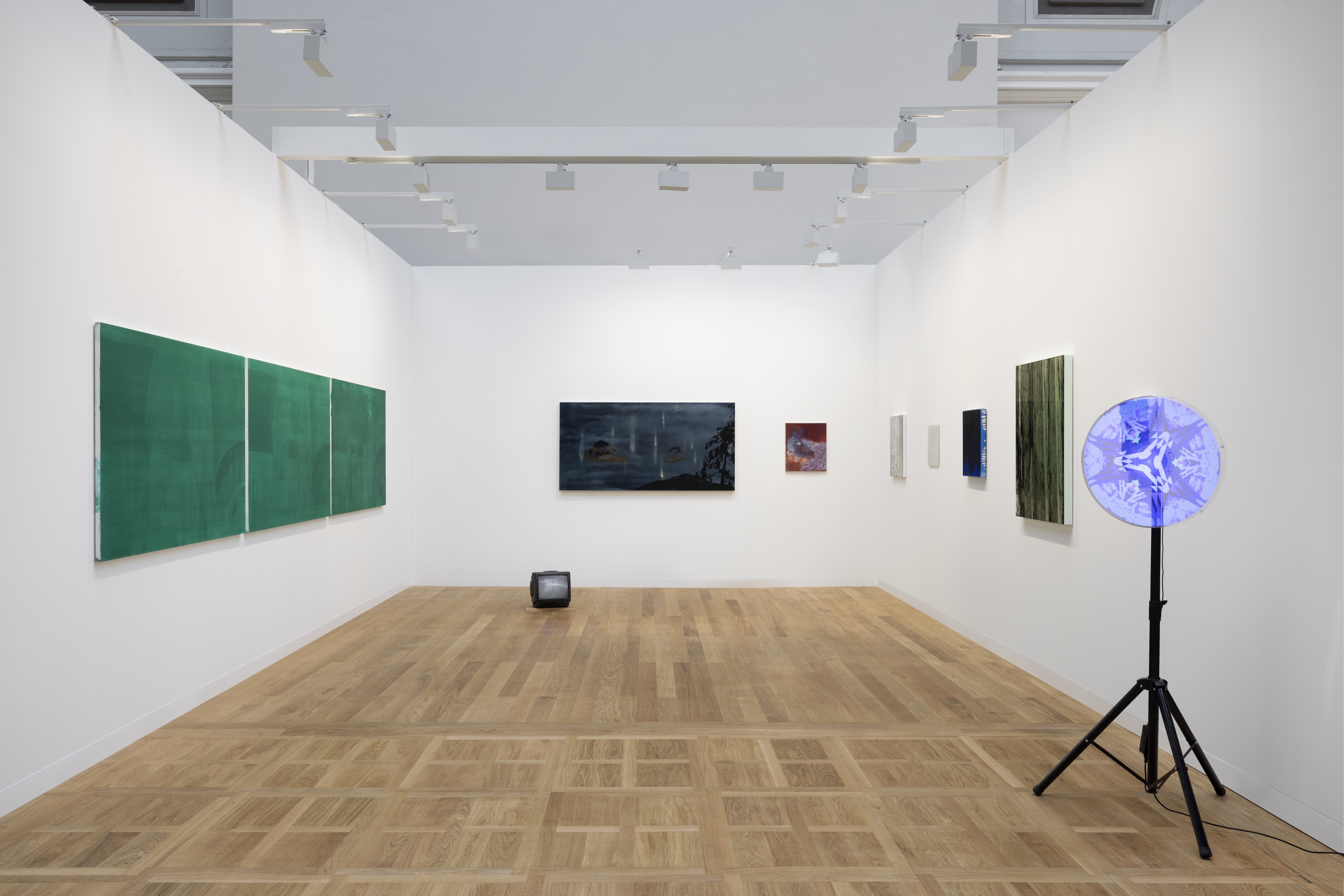
Photo by Andrea Rossetti.
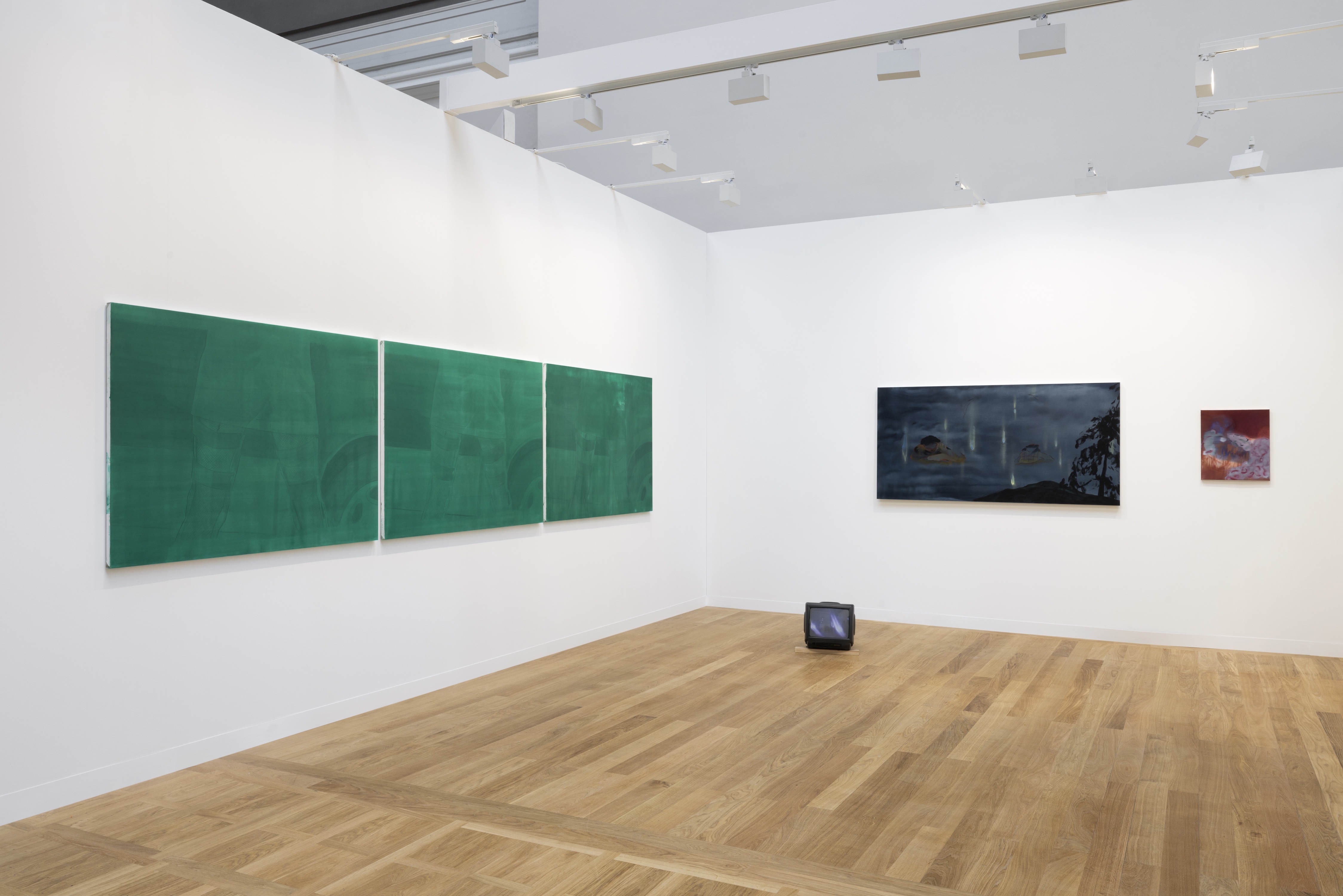
Photo by Andrea Rossetti.
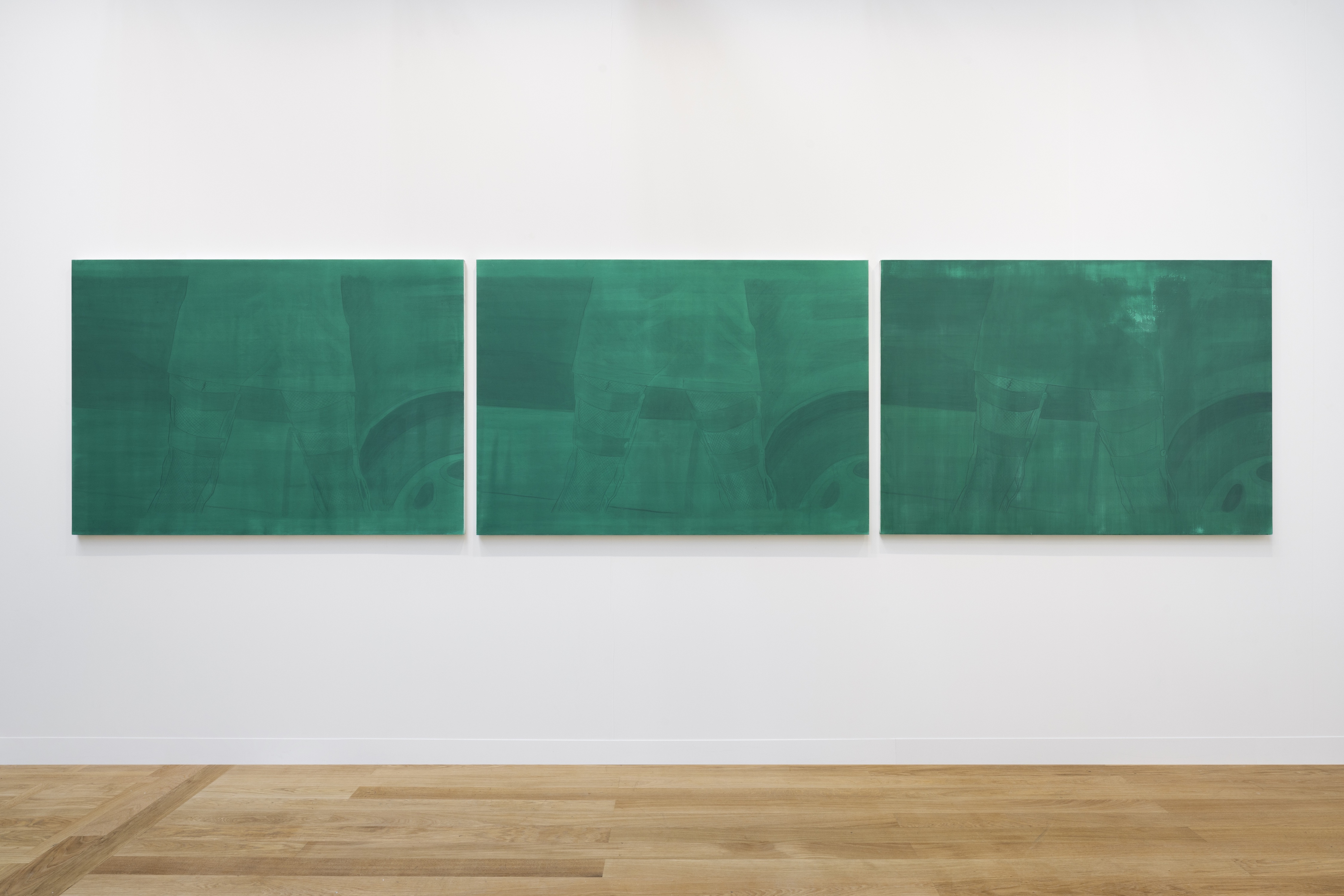
(140 x 170 cm/each)
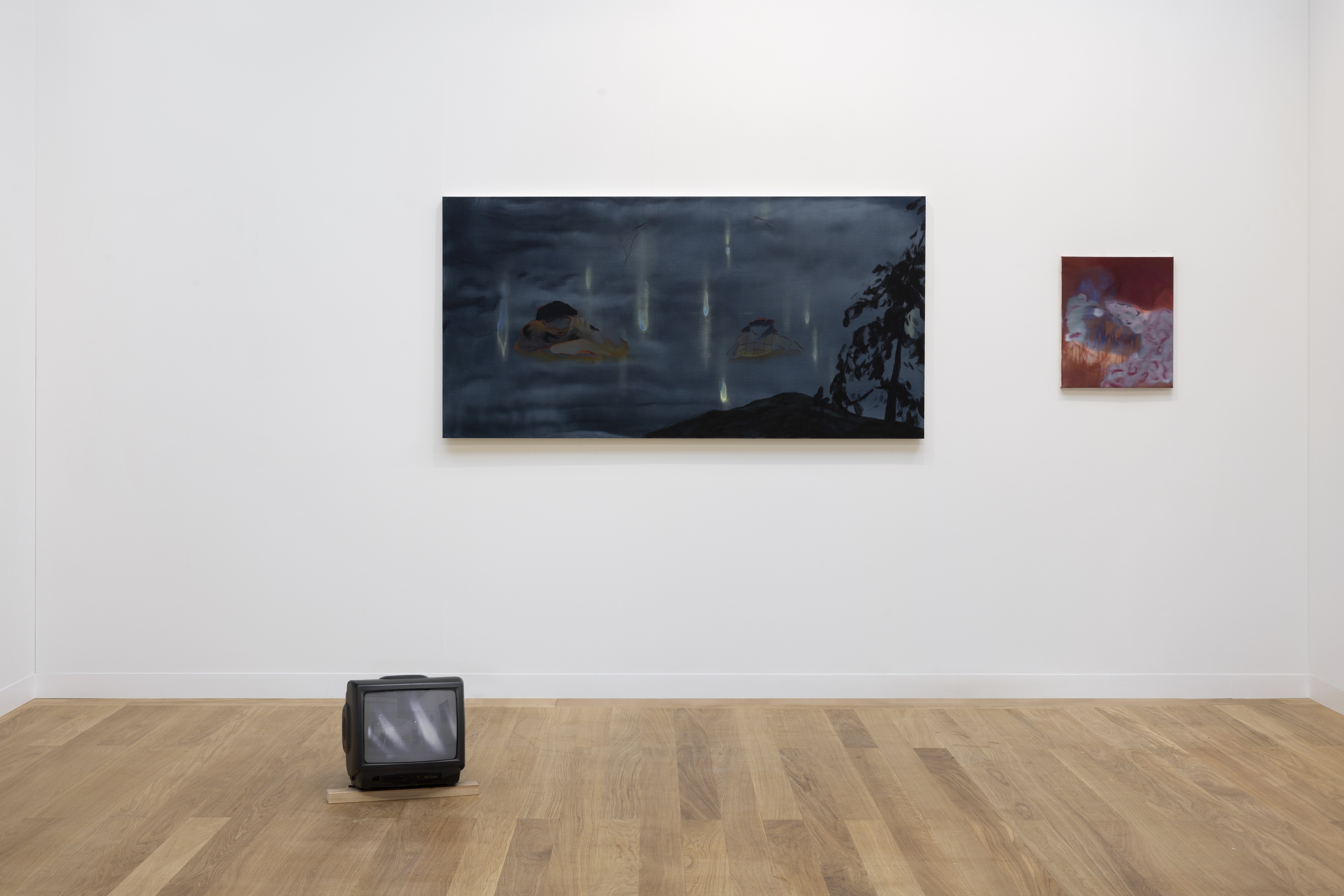
Photo by Andrea Rossetti.

Oil on linen
97 x 194 cm


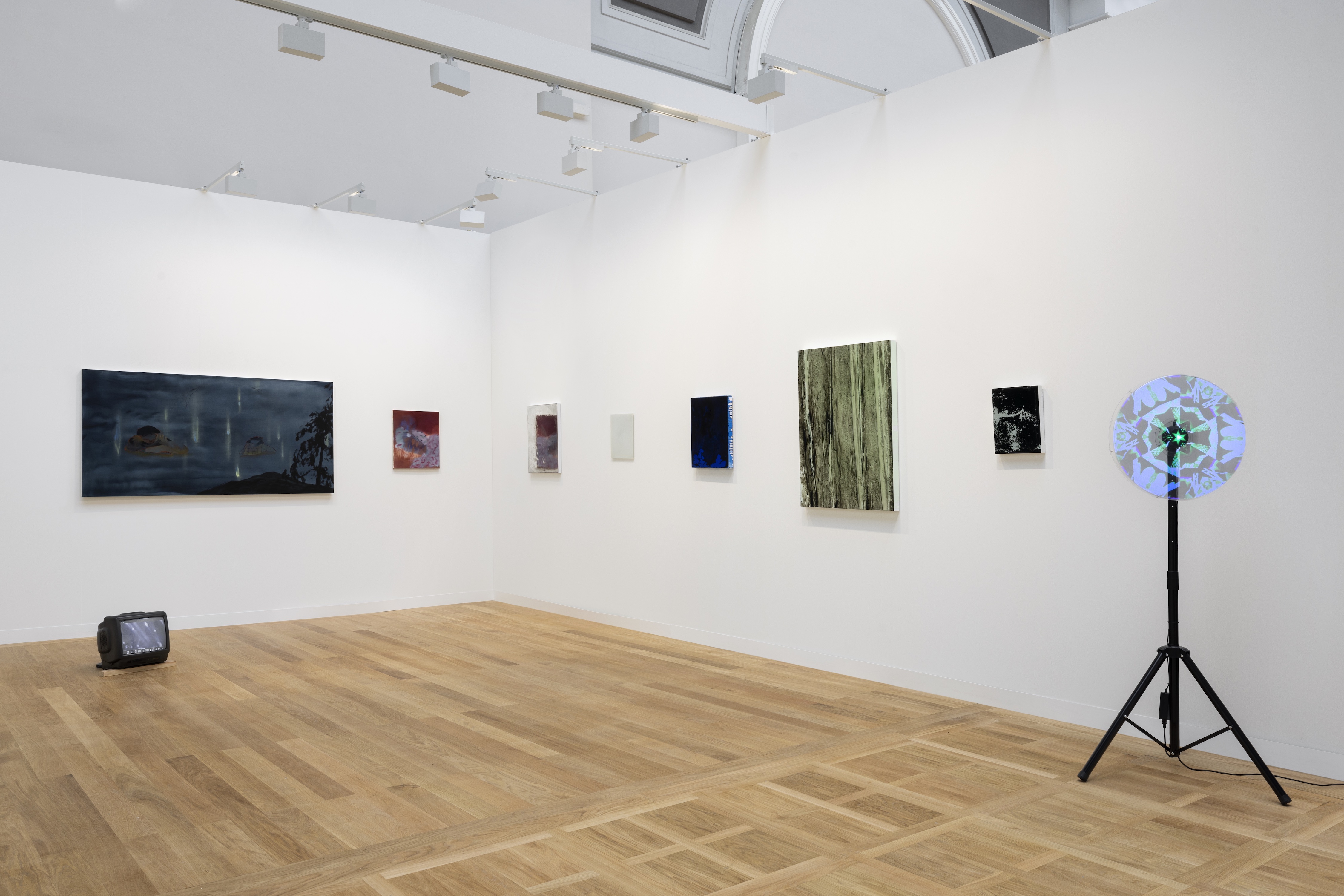
Photo by Andrea Rossetti.
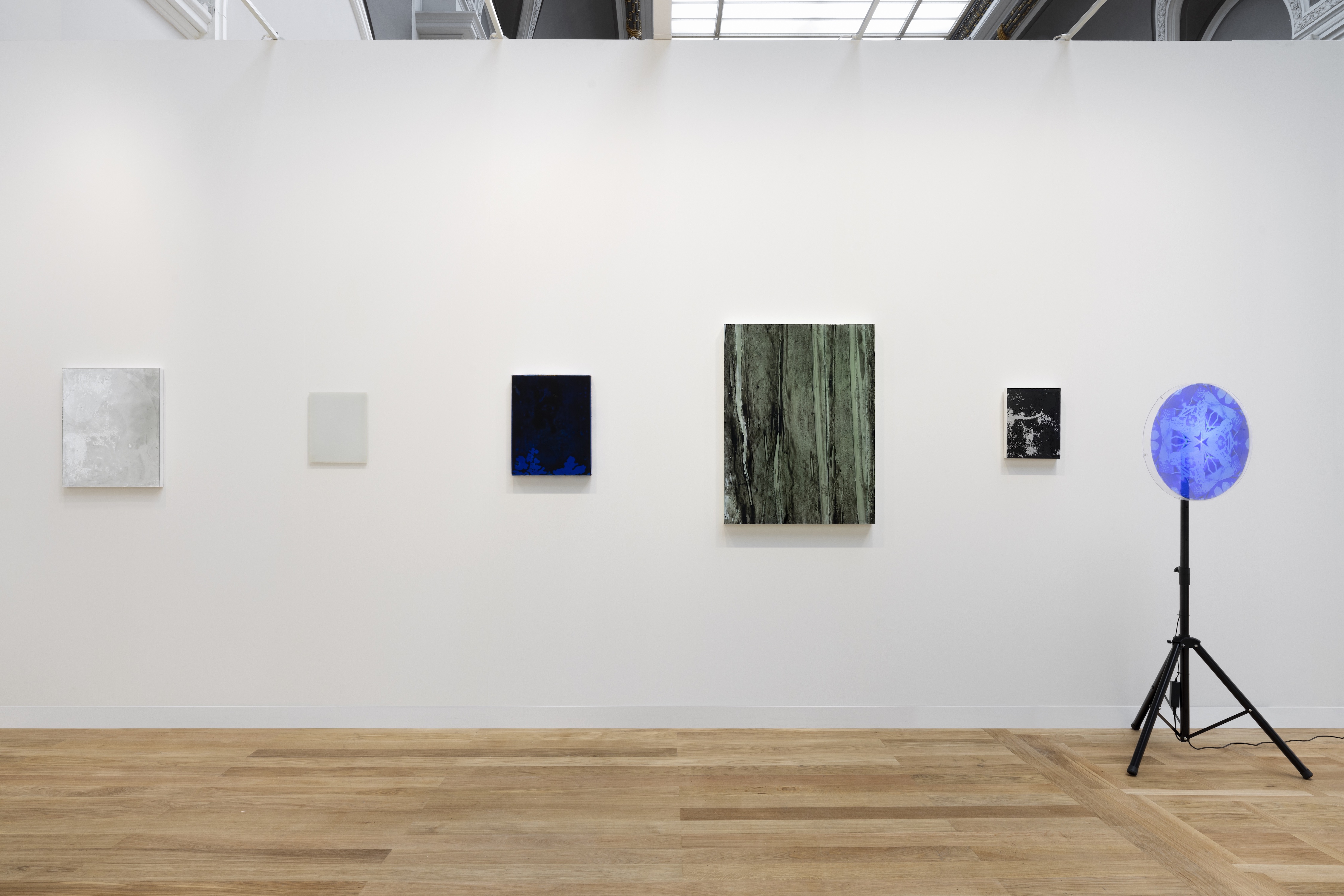
Photo by Andrea Rossetti.
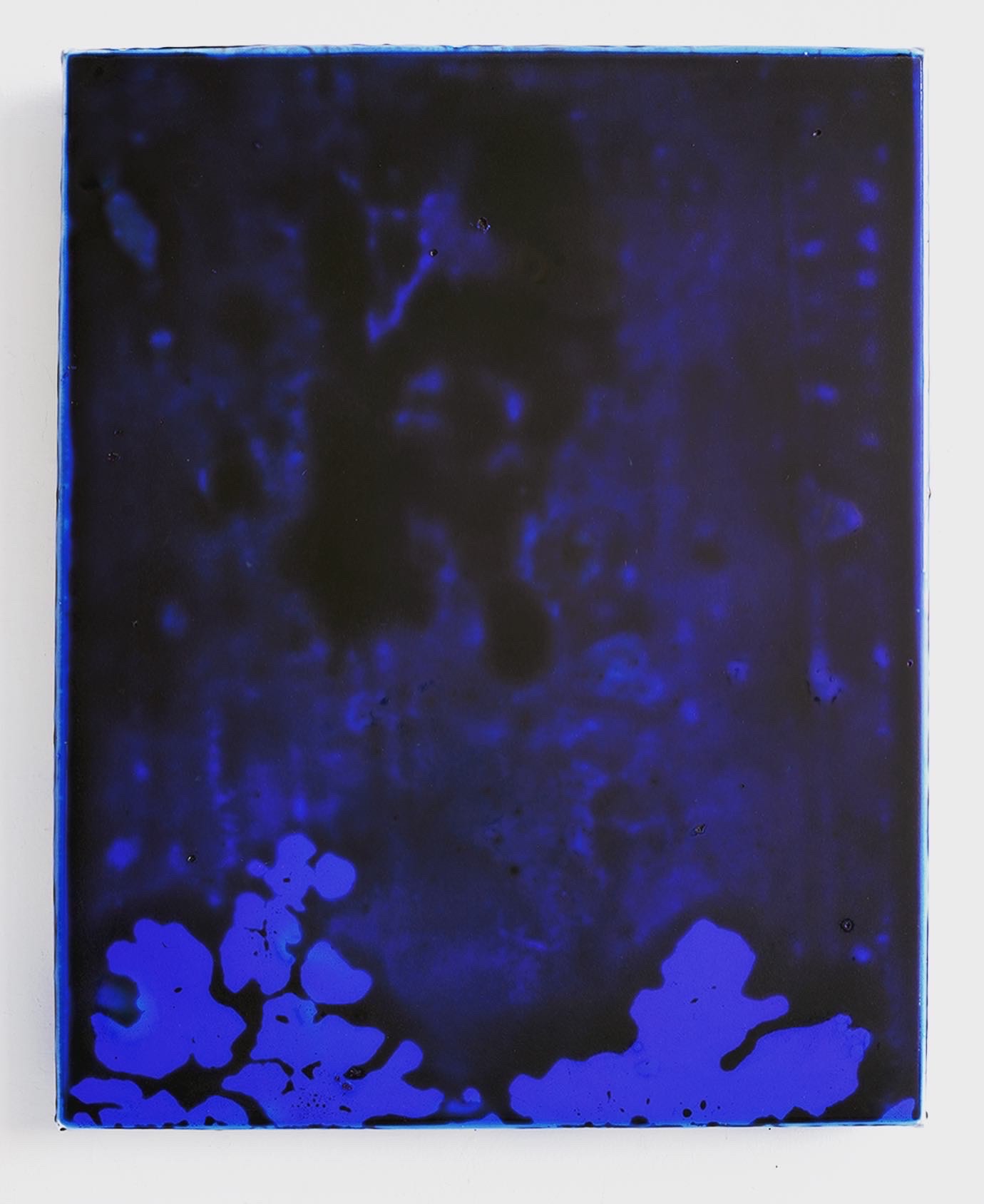
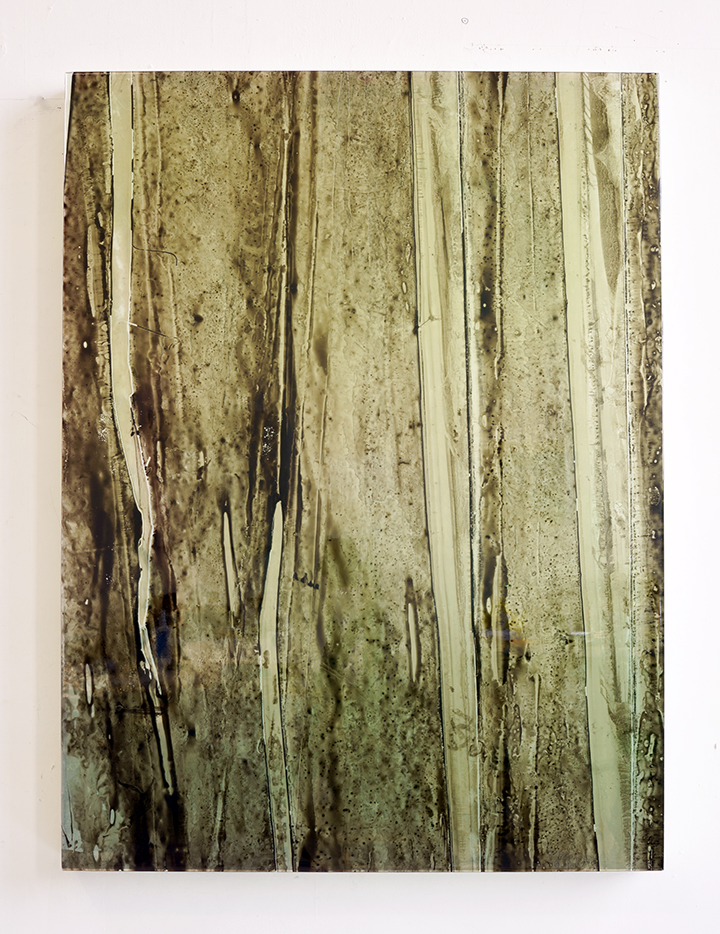
Reflective polyester film, urethane resin and mixed media on wood panel
40 x 30 in (101.6 x 76.2 cm)

LED motion video installation
5 min 10 sec